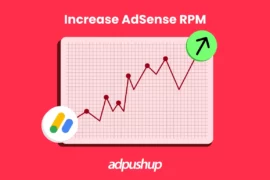Google’s broad core algorithm updates are released a few times every year and can cause fluctuations in ranking and search traffic. Here’s what you can do.
Have you noticed a sudden drop or surge in your traffic? It could be a direct result of Google’s new Broad Core Algorithm update rolled out on 13th January, 2020.
Almost every day, Google implements algorithm updates to improve search results for users worldwide. While most of these don’t have an observable change, broad core algorithm update can cause noticeable fluctuations in traffic.
What is a Broad Core Algorithm Update?
A broad core algorithm update differs from other core updates because of its ability to impact search results. It is rolled out only a few times a year, unlike other core algorithm updates which happen approximately twice a day, daily.
Broad core algorithm updates focus on improvement of search results for user queries, thus keeping user intent as the point of focus for these algorithmic changes.
Several search optimization experts have also recorded fluctuations in their website rankings during the initial days of the update. Here’s SEMRush’s graph based on SERP volatility from the end of December to the beginning of January:
What Webmasters Can Do to Improve Rankings
Google has always specified that the only way to recover from the impact of these updates is to improve the quality of content on your website. Additionally, Google also states that the content that performs well has a strong E-A-T.
E-A-T stands for Expertise, Authoritativeness and Trustworthiness.
Webmasters should focus on improving the E-A-T factor of their content in order to retain the performance of their webpages in Google search.
Here are some of the things you can do to improve this:
- Author byline:
Google explicitly mentions that readers must be made aware of the content creator’s background. By simply adding an author byline, you can achieve the A and T aspects of the E-A-T perspective. By stating the author’s information, readers immediately perceive you to be a trustworthy source of information, thus improving the website’s ranking in the process.
- Remove poor content:
The E-A-T score of the website is calculated after analyzing individual performance of all the webpages. Poorly performing or old/irrelevant content will drag down your overall E-A-T score. Trimming down this content will help in improvement of website ranking.
- Personal branding:
Adding or expanding on the ‘About us’ section on your website will remarkably help in improving your E-A-T score. Adding a schema markup in your HTML code will also help Google in understanding the intention and end-goal of your content.
- High-quality backlinks:
Before the 2012 Penguin update, the search performance of a website was directly proportional to the amount of backlinks it had. However, with Google’s algorithm update in place, it’s the quality of backlinks that will help improve your E-A-T score and not the quantity.
To sum up, if you want your content to perform well, you have to work towards making it more trustworthy and reliable.
Here are some recommended readings for understanding more about the subject:
- Google Broad Core Algorithm Updates: What You Need to Know
- What webmasters should know about Google’s core updates
- Google Update January 2020: Latest News and Analysis
- Google’s Core Algorithm Updates and The Power of User Studies

FAQs
When Google makes significant and broad changes to its search engine algorithm and systems, it is called a core update. Providing more relevant, useful, and trustworthy content for users is the goal of these updates.
Algorithm updates are periodic improvements to the algorithms used by search engines to rank websites.
The update improves contextual results for search queries. Unlike other updates, there is no fix for websites that were previously hurt by Google update. The only fix is to improve the content quality.

Shubham is a digital marketer with rich experience working in the advertisement technology industry. He has vast experience in the programmatic industry, driving business strategy and scaling functions including but not limited to growth and marketing, Operations, process optimization, and Sales.







